Melon thrips
The melon thrips (Thrips palmi) is a very small insect that is a pest of fruit and vegetables including important economic crops. Common hosts include beans, capsicum, eggplant, melons, pumpkin, squash, cucumber and zucchini.
Damage is caused by feeding on the leaves, fruit and stems of plants and by the transmission of plant viruses from host to host.
Melon thrips do not occur in Victoria but are present in the Northern Territory and Queensland.
Description
Egg
Eggs are extremely small (0.2 mm). They are laid within the host plant tissue (leaf, flower or fruit) and are not visible to the naked eye.
Juvenile
Juveniles (larvae) are small (0.5–1.0 mm), pale yellowish in colour, wingless and cigar-shaped (Figure 1). At this stage they are active feeders and may potentially be found on any above-ground part of a plant.
Pupa
Second-stage larvae drop to the soil to pupate. The 2 pupal stages (pre-pupa and pupa) remain wingless, are inactive and don’t feed, spending their life a few millimetres under the soil.
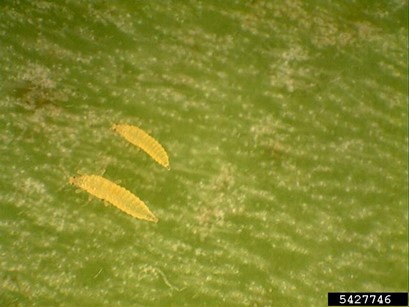
Adult
Adult melon thrips are approximately 1.0–1.5 mm long, yellow in colour, cigar-shaped and with fine-feathered wings (Figure 2). Melon thrips look very similar to other local species of thrips and identification of adults requires microscopic examination.
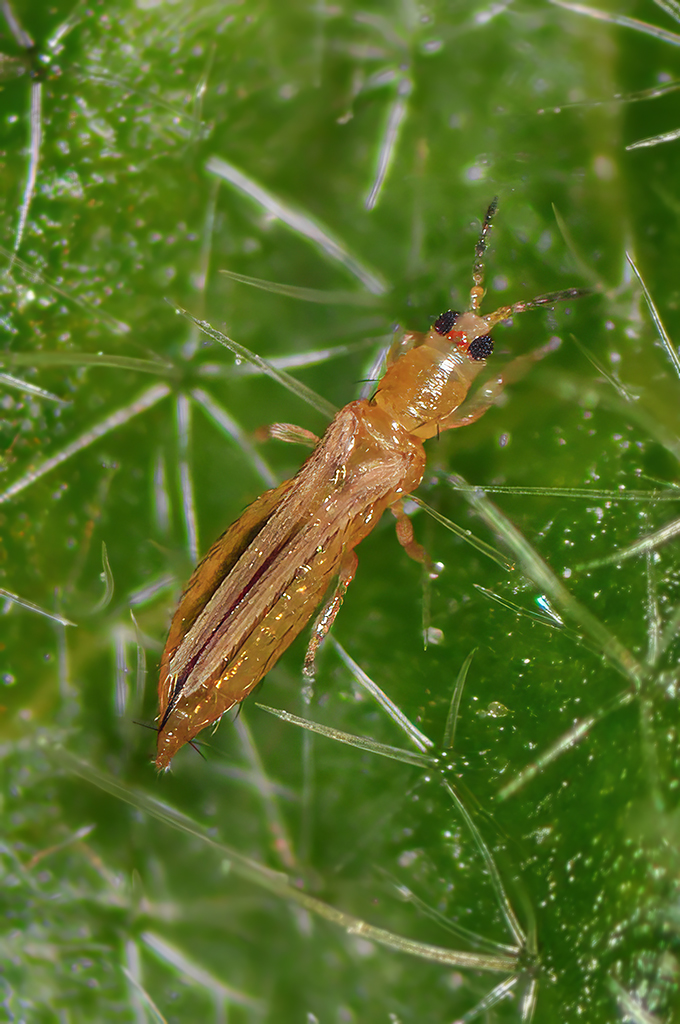
Feeding damage
Juveniles and adults are commonly found feeding on the underside of leaves, in flowers and on fruit.
Melon thrips have piercing and rasping mouth parts that damage the plant tissue by killing the cells during feeding. This can lead to silvering or bronzing of the leaves (Figure 3). Leaves and terminal shoots can become stunted and fruit is scarred and deformed (Figure 4).
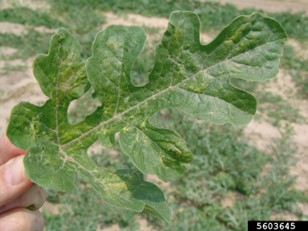
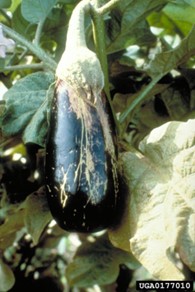
Melon thrips can also damage plants by transmitting plant viruses (tospoviruses) such as melon yellow spot virus, watermelon silver mottle virus and capsicum chlorosis virus, which can cause serious yield losses, particularly when the crops are infected early.
Hosts
Melon thrips feeds on a wide host range and has been recorded on over 200 plant species especially weeds and crops from the Cucurbitaceae and Solanaceae families. Common host plants include beans, capsicum, eggplant, melons, pumpkin, squash, cucumber and zucchini.
Life cycle
Thrips have a 6-stage life cycle: egg, 2 larval stages, 2 pupal stages and the adult (Figure 5).
The development time from egg to adult can vary from 10 to 16 days, depending on temperature.
Adult females insert their eggs into actively growing leaf tissue, developing flower buds and fruit. Each female can lay up to 100 eggs. It only takes 3–5 days for the larvae to transition to a second larval stage that drops to the ground and into the leaf litter to pupate once it is fully fed.
The 2 pupal stages (propupa and pupa) are referred to as resting phases. They stay in the ground for around 2–3 days, after which the adults emerge from the soil and crawl or fly to a nearby host plant to lay eggs
Optimum temperature for population growth is 25–30 °C, typically in spring, summer and autumn, although greenhouses can provide a suitable environment all year round. As many as 25–26 generations per year are estimated to occur in Taiwan.
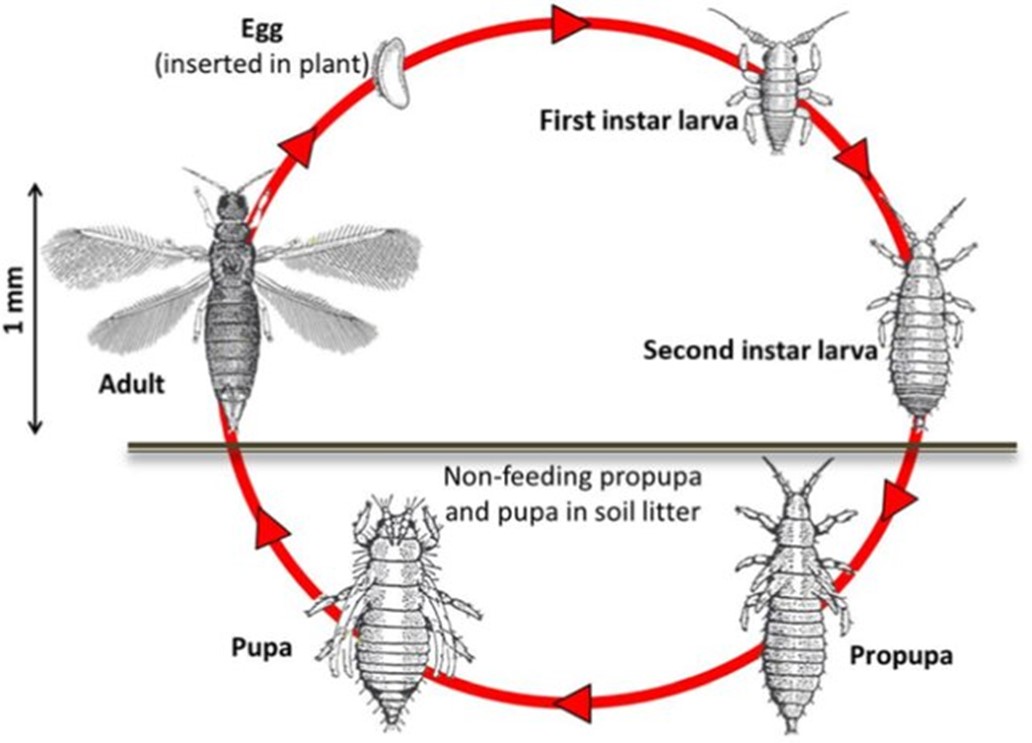
Distribution and spread
Melon thrips originated from southern Asia and have since spread throughout Asia, the Pacific region and the Caribbean. It has been recorded in North, Central and South America, Africa and Europe. Local infestations occur in Australia (Northern Territory and Queensland only).
Adults thrips are weak fliers but can be easily dispersed by wind.
Eggs, larvae and adults are distributed through the movement of flowers, fruits, plants for planting, people and contaminated equipment.
Pupae are unwittingly distributed by movement of soil, packing cases and growing medium.
Infected weeds can act as local sources of infestation, sustaining melon thrips until a crop becomes available.
Photo credits
- Figure 1: Mohammad Mirnezhad, Leiden University, bugwood.org
- Figure 2: P Ryckewaert, CIRAD.
- Figure 3: Gerald Holmes, Strawberry Center, Cal Poly San Luis Obispo, bugwood.org
- Figure 4: J Guyot, INRA, Pointe-à-Pitre, bugwood.org.
- Figure 5: Thripidae life cycle, from European Food Safety Authority (2019) https://doi.org/10.2903/j.efsa.2019.5620
Reporting an unusual plant insect pest or disease
Report any unusual plant pest or disease immediately using our online reporting form or by calling the Exotic Plant Pest Hotline on 1800 084 881. Early reporting increases the chance of effective control and eradication.
Please take multiple good quality photos of the pests or damage to include in your report where possible, as this is essential for rapid pest and disease diagnosis and response.
Your report will be responded to by an experienced staff member, who may seek more information about the detection and explain next steps.
Report online